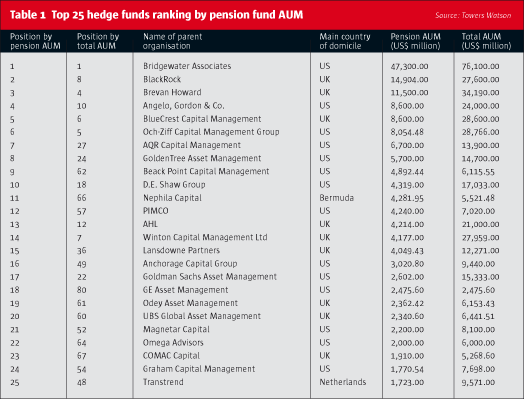Investors add a bit of hedge fund to portfolio mix
Post on: 16 Май, 2015 No Comment

By Adam Shell, USA TODAY
NEW YORK — Hedge funds are designed for millionaires, billionaires and the world’s biggest institutional investors. Unless you have a spare $1 million or so, your dream of investing in a hot-shot hedge fund is just that: a dream.
But investors with five-figure salaries and portfolio balances in the tens of thousands who want in on the hedge fund game need not despair.
Hedge fund strategies have gone retail. Copycat mutual funds that mimic the alternative investment strategies that hedge funds use are being rolled out to attract the 401(k) crowd. Minimum investments are as low as $500.
There are many more opportunities now for retail investors to cover corners of the market that had been considered esoteric or more risky in the past, says Jeff Tjornehoj, senior analyst at fund-tracker Lipper.
Since the start of 2003, the number of mutual funds that utilize hedge fund strategies has more than doubled, to 49 from 21, Lipper says. And 12 of these funds dubbed equity-market neutral and long/short equity were born this year alone, a 32% jump from 2005.
The proliferation of hedge-fund-like products for the masses is part of a bigger trend. There seems to be a convergence of what was once considered non-traditional investments with the more traditional strategy of buying stocks that you think will go up, says Phil Maisano, head of alternative investments at Mellon Asset Management.
The rising popularity of these funds prompted fund expert Morningstar to create its first long-short category in March. Assets have surged 42% to $16.1 billion from $11.3 billion in nine months. Major fund companies such as Janus, American Century, Rydex, Dreyfus and Charles Schwab now offer these so-called alternative funds.
More tools for individuals
Hedge-fund-like funds present an opportunity for retail investors to gain exposure to the types of investments once reserved for the very rich or for big professional investors. But they’re not really designed for do-it-yourself investors.
Similar to hedge funds, they employ exotic and arcane strategies that carry risks. Even their names are difficult to comprehend: ING 130/30; Alpha Hedged Strategies; Rydex Hedged Equity; Diamond Hill Long-Short.
Funds that employ shorting strategies, for example, profit only when share prices are falling, increasing the risks of losses when the stock market is flying high, as it has been most of this year. Such funds also are highly dependent on the ability of fund managers to correctly pick which stocks are likely to fall.
Hedging strategies also employ more speculative tactics, such as leverage, and the use of options, futures and derivatives, which may accelerate the velocity of possible losses, according to a risk disclosure by AIP Alternative Strategies Funds.
Retail investors should not be buying these funds without some sort of financial advice, says Kurt Borgwardt, manager of American Century Long-Short fund.
Caveats aside, the new pseudo-hedge funds also jibe with a growing movement on Wall Street that favors a broader mix of alternative assets and investment styles in the toolbox of retail investors.
The goal: to help retail investors build portfolios that will hold up better in down markets and produce more consistent returns like the more widely diversified portfolios built by sophisticated institutional investors. Endowment funds at universities such as Harvard and Yale, for example, have consistently posted market-beating returns year after year by investing in a broad array of assets, including big helpings of alternative investments such as hedge funds, private equity, real estate and hard assets such as oil and even timber.
Indeed, the number of ingredients needed to properly diversify a portfolio seem to be on the rise. It used to be enough to buy a healthy dose of stocks, a dash of bonds and a pinch of cash. But that thinking is increasingly viewed as old-fashioned. Now, in an attempt to smooth out returns and reduce risk, there’s a push to sprinkle in other asset classes that do not rise and fall in lockstep with the stock market.
Earlier this year, Dreyfus launched a Global Alpha fund managed by parent Mellon Capital. Janus Adviser launched its Long/Short fund. And Rydex launched three highly diversified portfolios that resemble those used by endowments and include allocations to the Hedged Equity fund it launched last year.
From a marketing perspective, the fund companies have an enticing sales pitch, says Todd Trubey, a mutual fund analyst at Morningstar: The expectation is that you can do well when the stock market is going up and not get hurt badly when it is going down.
Hedge fund strategies are designed to produce consistent, positive annual returns in all market environments. More important, these returns aren’t dependent on how the stock and bond markets are performing. In theory, the ability of hedged portfolios to zig when the rest of the market zags boosts diversification and lowers risk.
The reason hedge funds have been successful is that they have a greater degree of flexibility, says Benjamin Bowler, co-head of global equity-linked research at Merrill Lynch. One primary reason to invest in hedge funds is for their diversification properties. And that is something that these (hedge-like) strategies can offer to individual investors.
The main hedging tactic these new funds are borrowing from real hedge funds is shorting, which is basically a bet that stock prices will fall. In a short sale, a money manager borrows shares, then sells them, with the hope of buying them back at a lower price at a later date and booking a profit.
A repeal of an IRS rule in 1997 opened the door for traditional mutual funds to employ shorting strategies. Still, virtually all mutual funds marketed to retail investors today still employ a so-called long strategy. Long mutual funds buy shares of stocks that they think will rise in price and have little downside protection.
Born in the burst bubble
The genesis of the pseudo-hedge fund trend dates to the 2000-02 bear market. That’s when the popularity of hedge funds skyrocketed, due to their ability to post positive returns while the rest of the stock market was in free fall.
People started looking for positive returns wherever they could get them, says Erik Ristuben, chief investment strategist at Russell Investment Group.
Tom Reid of Cocoa Beach, Fla. was one of those people. Back in September 2002, at the tail end of the worst stock market decline since the Great Depression, the semi-retired Reid was among the first investors to buy shares in Charles Schwab’s then-new Hedged Equity fund.
I liked the theory of hedging, says Reid, now 70, who also trades options and invests in real estate. Reid paid the opening price of $10 per share. The Hedged Equity fund closed Thursday at $15.77. His total gain: 57.7% vs. a 54.7% gain for the Standard & Poor’s 500-stock index. The fund is a whole lot better than owning bonds, Reid says.
Since many of the hedge-like funds are fairly new, their performance in down markets is unproven. And not all hedge-like mutual funds have posted market-beating returns in the bull market that began in 2003. Equity-market-neutral funds have trailed U.S. diversified stock funds in the one-, three- and five-year periods ended Nov. 30. In the 12-month period ended Nov. 30, the 4.5% return of equity-market-neutral funds trailed the average stock fund by more than 7 percentage points.

The returns of long/short equity funds have been both more robust and more consistent, yet still lag the average stock fund. Long/short funds are up 8.2% this year through November, vs. an 11.5% gain for the average stock fund. But they’ve posted annualized gains of 9.4% in the most recent three-year period, less than 2 percentage points behind the average stock fund.
The returns have not really been particularly attractive, says Morningstar analyst Todd Trubey. By and large, you don’t see the type of risk-reward profile that would cause you to pick one of these funds rather than a standard equity fund or bond fund with a low risk-reward profile.
Adding alpha to the mix
Like most investments, the key to success is a portfolio manager who can add alpha, or returns that beat what the market gives you, adds Ristuben. This is all about the people implementing the strategy, he says.
It’s not uncommon for hedge-fund-like funds to post lower returns than the broader market when stocks are rallying, given their hedging strategies. Their goal is to preserve capital and provide a steady stream of returns that don’t follow the market, says Lipper’s Tjornehoj. They become more popular when the market is going sideways or down.
In general, hedging strategies try to generate returns of, say, 3 to 5 percentage points above a risk-free rate of return such as the three-month Treasury bill yield. We are not trying to beat the S&P 500, we are trying to beat cash, says American Century’s Borgwardt. The fund is not designed to be the hot fund. To reduce volatility and remove market risk, the fund invests roughly half its assets to buy stocks that have good prospects; the other half is devoted to selling short those stocks with poor prospects, Borgwardt says.
Chris Cordaro, chief investment officer at RegentAtlantic Capital, is a big believer in using alternative investments to improve the risk-and-reward characteristics of his client’s portfolios. Currently, 20% of most of his clients’ assets are invested in alternative asset classes, including hedge-fund-like mutual funds.
We are moving toward institutional type portfolios, Cordaro says. You can look at history and see that retail investors have followed what the institutions have done and have benefited from that.
To reduce risk, Cordaro favors hedge-fund-like funds that invest in a large number of investment managers who use various investment strategies. It’s very similar to the popular hedge fund-of-funds offerings. One of Cordaro’s favorites is the Alpha Hedged Strategies fund run by Alternative Investment Partners, which has posted annualized returns of 9.1% in the three-year period ended Nov. 30, according to Lipper.
The fund currently has 15 subadvisers executing 15 different active strategies with labels such as convertible bond arbitrage, international long-short equity, distressed securities & special situations, and earnings revision long/short equity-market neutral.
If you have a diversified fund of funds with different managers and strategies, it is a pretty low-risk strategy, he says. The problem with a one-strategy fund is, too much depends on the manager and strategy. The manager can have a good or bad year and the strategy can go out of favor.
While these new funds are sold under the guise of mutual funds, it does not mean that the investment strategies they use are any less confusing than a hedge fund. That’s why virtually all the firms offering these funds tell retail investors to seek guidance from a financial planner or other third party to determine if the funds are appropriate for them and, if they are appropriate, which funds they should select and how much of their overall portfolio should be devoted to these kinds of alternative investments.
How much of an investors’ portfolio should be invested in alternative investments? Assuming that the investor works with an adviser, and the proper due diligence has been completed, anywhere from 5% to 15% of one’s portfolio is appropriate, says David Bailin, head of the alternative investments group at U.S. Trust.
The question isn’t whether someone is wealthy or not, says Bailin. The purpose for having alternative investments in a portfolio are the same: to diversify risk, lower volatility and increase the probability of profits and consistent returns.














